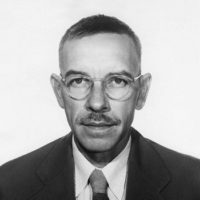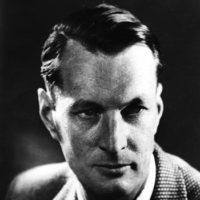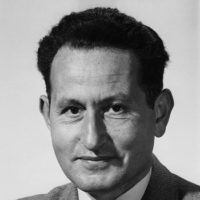
Alfred D. Hershey
Cold Spring Harbor Laboratory

Gerhard Schramm
Max-Planck Institute for Virus Research

Heinz Fraenkel-Conrat
University of California, Berkeley
For the discovery of the fundamental role of nucleic acid in the reproduction of viruses and in the transmission of inherited characteristics.
Heinz Fraenkel-Conrat, Alfred Hershey, and Gerhard Schramm are responsible for a discovery that may be as important to biology and medicine as was the discovery of radioactivity to physics. Working with viruses in different parts of the world, these three scientists have demonstrated that a single chemical substance is the chief determinant of heredity in living matter. This genetic substance is nucleic acid.
It was Dr. Hershey, in 1952, who provided evidence that the genetic factor of a bacterial virus consists of deoxyribose nucleic acid. In 1955, Dr. Schramm in Germany and Dr. Fraenkel-Conrat in the United States independently isolated the ribose nucleic acid component of a plant virus. Their laboratory experiments proved that this nucleic acid could enter plant host cells and could generate identical new virus particles.
The discovery of infectious nucleic acid provides a new approach to the basic nature of reproduction of living things, to the problems of mutation, and even to the transformation of a normal cell into a cancer cell.
Because nucleic acid is responsible for the transfer from parent to offspring of information concerning the form and substance of all life on Earth, its study makes possible a whole new field of research activity. This research also offers significant approaches to a direct attack on virus disease and a better understanding of virus activity.
